The Rural Municipality of Cupar has provided financial support to our local libraries. Parkland Regional Library has a branch in Southey and Cupar. They are part of the one card, one library system. Books & material can be picked up in any Saskatchewan library and returned to any Saskatchewan library. Library cards are free for everyone. They also have e-book service free of charge. Our library offers lots of choices for every age. They have a great selection of large print books for those who have some visual impairment. They also have computer services available for public use. The hours are:
Cupar Library Hours:
Wednesday:
Friday:
10:30 p.m. – 5:00 p.m.
Southey Library Hours:
Here are 10 Reasons Why You Should Read More Books:
1. To Develop Your Verbal Abilities
Although it doesn’t always make you a better communicator, those who read tend to have a more varied range of words to express how they feel and to get their point across. This increases exponentially with the more volumes you consume, giving you a higher level of vocabulary to use in everyday life. Why read
2. Improves Your Focus and Concentration
Unlike blog posts and news articles, sitting down with a book takes long periods of focus and concentration, which at first is hard to do. Being fully engaged in a book involves closing off the outside world and immersing yourself into the text, which over time will strengthen your attention span. Why to
3. Readers Enjoy The Arts and Improve The World
A study done by the NEA explains that people who read for pleasure are many times more likely than those who do not to visit museums and attend concerts, and almost three times as likely to perform volunteer and charity work. Readers are active participants in the world around them, and that engagement is critical to individual and social well-being.
4. It Improves Your Imagination
You are only limited by what you can imagine, and the worlds described in books, as well as other peoples views and opinions, will help you expand your understanding of what is possible. By reading a written description of an event or a place, your mind is responsible for creating that image in your head, instead of having the image placed in front of you when you watch television. Why read
5. Reading Makes You Smarter
Books offer an outstanding wealth of learning and at a much cheaper price than taking a course. Reading gives you a chance to consume huge amount of research in a relatively short amount of time. Anne E. Cunningham and Keith E. Stanovich’s
“What Reading Does for the Mind” also noted that heavy readers tend to display greater knowledge of how things work and who or what people were. Books at home have been strongly linked to
academic acheivement. If you are looking for a list of great books to read, check out
10 Easy To Read Books That Make You Smarter.6. It Makes You Interesting And Attractive
This goes hand in hand with reading to become smarter. Having a library of information that you have picked up from non-fiction reading will come in handy in any academic or scholarly conversation. You will be able to hold your own and add to the conversation instead of having to make your excuses and leave. You will be able to engage a wider variety of people in conversation and in turn improve your knowledge and conversation skills. Why to read
7. It Reduces Stress
A study by consultancy firm Mindlab International at the University of Sussex showed that reading reduces stress. Subjects only needed to read, silently, for six minutes to slow down the heart rate and ease tension in the muscles. In fact it got subjects to stress levels lower than before they started. For more information, check out the Telegraph article here. Why read
 8. It Improves Your Memory
8. It Improves Your Memory
In their book Proust and the Squid: The Story and Science of the Reading Brain, Maryanne Wolf explains that “Typically, when you read, you have more time to think. Reading gives you a unique pause button for comprehension and insight. By and large, with oral language—when you watch a film or listen to a tape—you don’t press pause.” The benefits of this increased activity keeps your memory sharp and your learning capacity nimble. Why read
 9. To Discover and Create Yourself
9. To Discover and Create Yourself
In his book How to Read and Why, Harold Bloom says that we should read slowly, with love, openness, and with our inner ear cocked. He explains we should read to increase our wit and imagination, our sense of intimacy–in short, our entire consciousness–and also to heal our pain. “Until you become yourself, what benefit can you be to others.” With the endless amount of perspectives and lives we can read about, books can give us an opportunity to have experiences that we haven’t had the opportunity to, and still allow us to learn the life skills they entail. Books are a fast rack to creating yourself. Why read
10. For Entertainment
All the benefits of reading mentioned so far are a bonus result of the most important benefit of reading; Its entertainment value. If it were not for the entertainment value, reading would be a chore but it needn’t be. Reading is not only fun, but it has all the added benefits that we have discussed so far. Much more enthralling than watching a movie or a TV show (although they have their many benefits as well), a good book can keep us amused while developing our life skills.
Why read
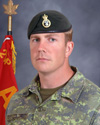



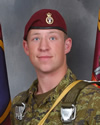
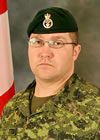


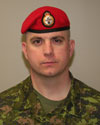

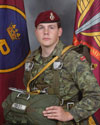
 8. It Improves Your Memory
8. It Improves Your Memory 9. To Discover and Create Yourself
9. To Discover and Create Yourself